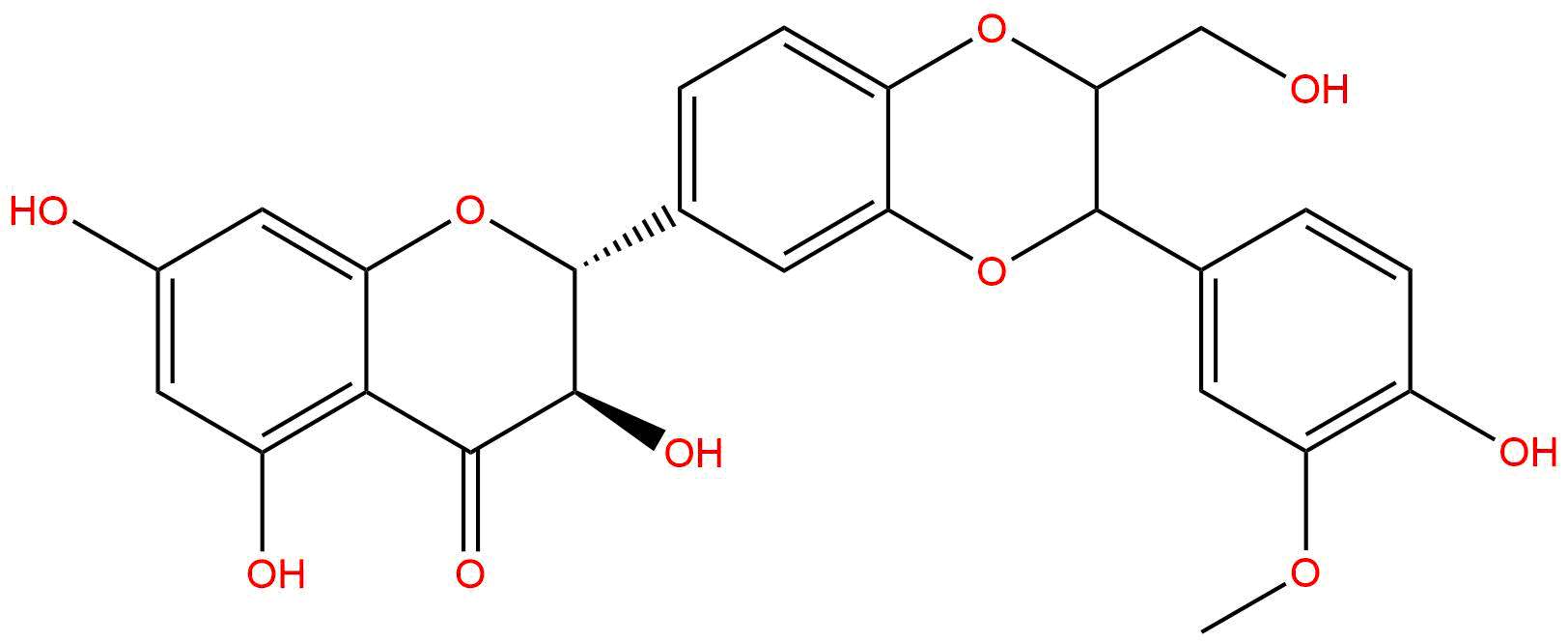
SilybinCAS No.:802918-57-6
|
||||||||||
 |
|
|
||||||||

| Catalogue No.: | BP1305 |
| Formula: | C25H22O10 |
| Mol Weight: | 482.43618 |
Product name: Silybin(Mixture A&B)
Synonym name: Silibinin; Silymarin; 802918-57-6
Catalogue No.: BP1305
Cas No.: 802918-57-6
Formula: C25H22O10
Mol Weight: 482.441
Botanical Source:
Physical Description: White powder
Type of Compound: Flavonoids
Purity: 95%~99%
Analysis Method: HPLC-DAD or/and HPLC-ELSD
Identification Method: Mass, NMR
Packing: Brown vial or HDPE plastic bottle
Storage: Store in a well closed container, protected from air and light. Put into refrigerate or freeze for long term storage.
Whenever possible, you should prepare and use solutions on the same day. However, if you need to make up stock solutions in advance, we recommend that you store the solution as aliquots in tightly sealed vials at -20℃. Generally, these will be useable for up to two weeks.
The product could be supplied from milligrams to grams, up to kilograms
Inquire for bulk scale.
Descriptions:
Silymarin (SIL), a standardized plant extract containing about 60% polyphenole silibinin, is used as a hepatoprotective agent, it retards collagen accumulation in early and advanced biliary fibrosis secondary to complete bile duct obliteration in rats, it also may play a role in the therapy of (alcoholic) liver cirrhosis.[1,2]
Silymarin modulates imbalance between cell survival and apoptosis through interference with the expressions of cell cycle regulators and proteins involved in apoptosis; it also shows anti-inflammatory as well as anti-metastatic activity; it has the protective effects in various tissues, suggest a clinical application in cancer patients as an adjunct to established therapies, to prevent or reduce chemotherapy as well as radiotherapy-induced toxicity.[3]
Silymarin possesses antioxidant, anti-inflammatory and immunomodulatory properties which may lead to the prevention of skin cancer in in vivo animal models, suggests that it is a promising chemopreventive and pharmacologically safe agent which can be exploited or tested against skin cancer in human system, moreover, it may favorably supplement sunscreen protection and provide additional anti-photocarcinogenic protection.[4]
Silymarin induces apoptosis primarily through a p53-dependent pathway involving Bcl-2/Bax, cytochrome c release, and caspase activation.[5]
Silymarin and silibinin cause G1 and G2–M cell cycle arrest via distinct circuitries in human prostate cancer PC3 cells.[6]
References:
[1] Boigk G, Stroedter L, Herbst H, et al. Hepatology, 1997, 26(3):643-9.
[2] Saller R, Meier R, Brignoli R. Drugs, 2001, 61(14):2035-63.
[3] Ramasamy K, Agarwal R. Cancer Lett, 2008, 269(269):352-62.
[4] Katiyar S K. Int J Oncol, 2005, 26(1):169-76.
[5] Katiyar S K, Roy A M, Baliga M S. Mol Cancer Ther, 2005, 4(2):207-16.
[6] Deep G, Singh R P, Agarwal C, et al. Oncogene, 2006, 25(7):1053-69.
[7] Korany M A, Haggag R S, Ragab M A A, et al. Arab J Chem, 2013, 06.021.
HPLC of Silybin
